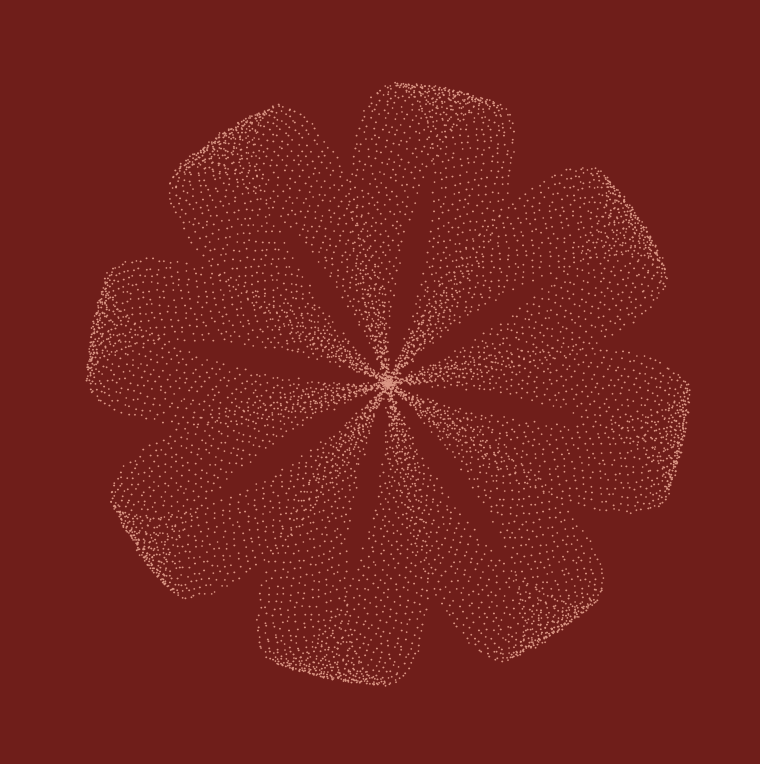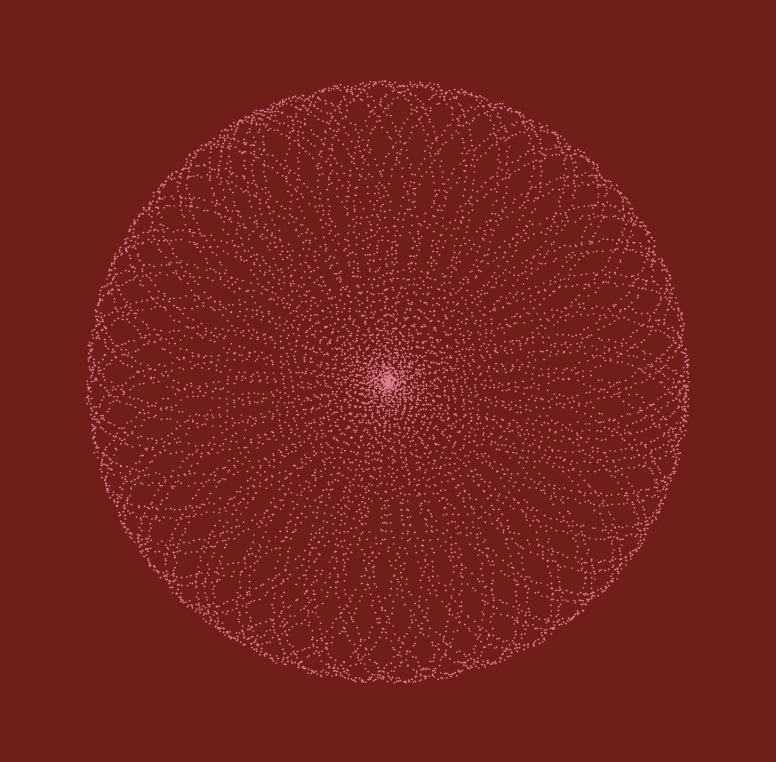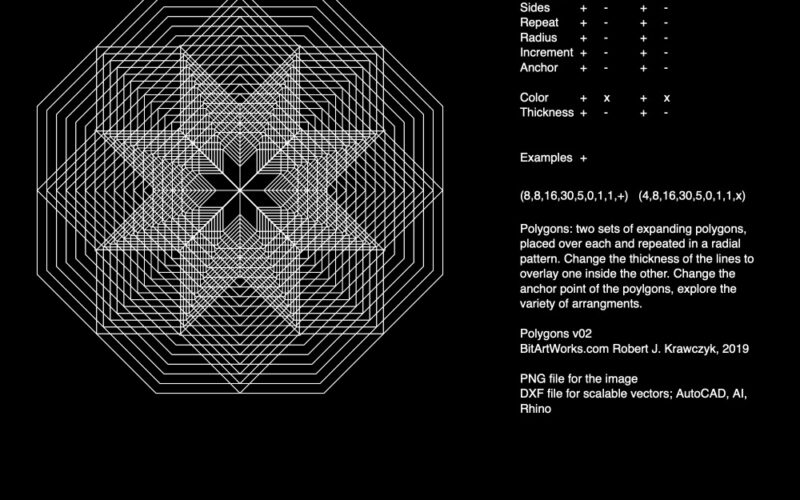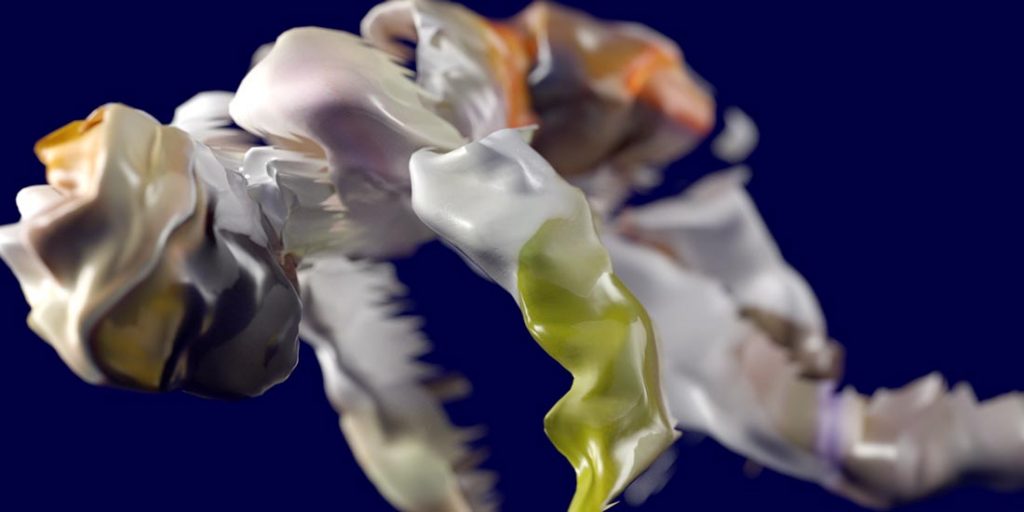edit (forgot to put this earlier) – I am using 1 of my grace days for this late submission.
The project “Melting Memories” by Refik Anadol Studio created in 2017 is a beautiful series of artworks created from visualizing different EEG data collected. By representing the EEG data gives it a tactility that emphasizes the materiality of memory. The EEG data collected was based off of the prompt to focus on recalling specific moments of childhood.
I think it is beautiful and admirable that the project has this large scale, and this sense of having an organic life of itself. It is interesting to me how the data was able to have such a sculptural form. This sculptural form makes me think about how all EEG data is collected from the flesh of our being, and that the integration of data into this piece allows one to understand this generated sculpture as part of one’s own personal world.
I suppose the algorithms that generated this work broke down the EEG data into several characteristics like the amplitude of the wave, the duration of the spikes, and used these broken down variables in order to also cue the drawing for the moving image.
The artist’s sensibilities for simplicity and emotional impact are clear through the clean documentation for this piece in the photographs and the video of this work.

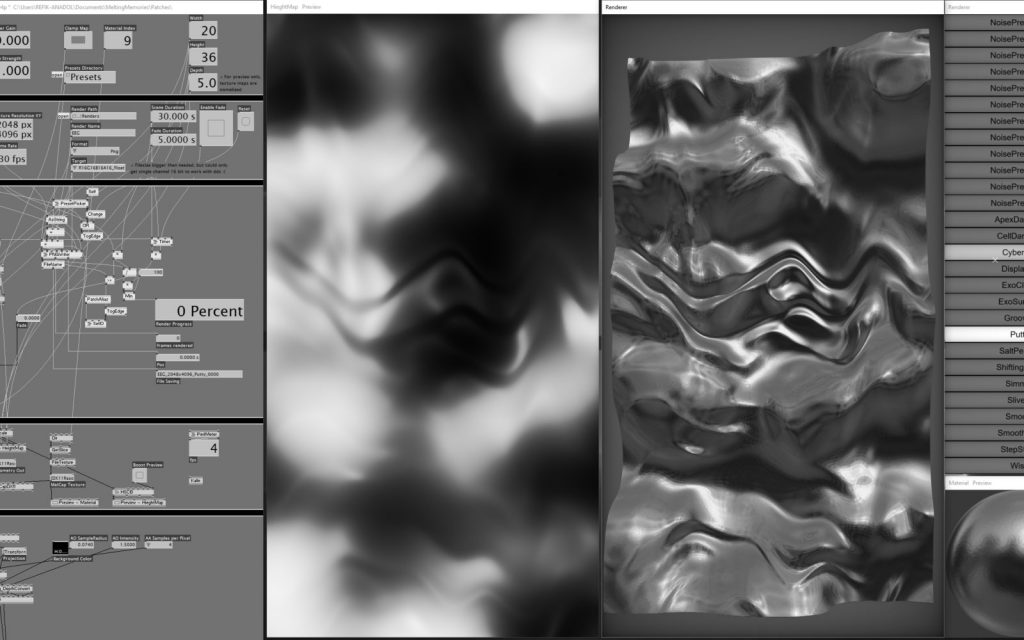
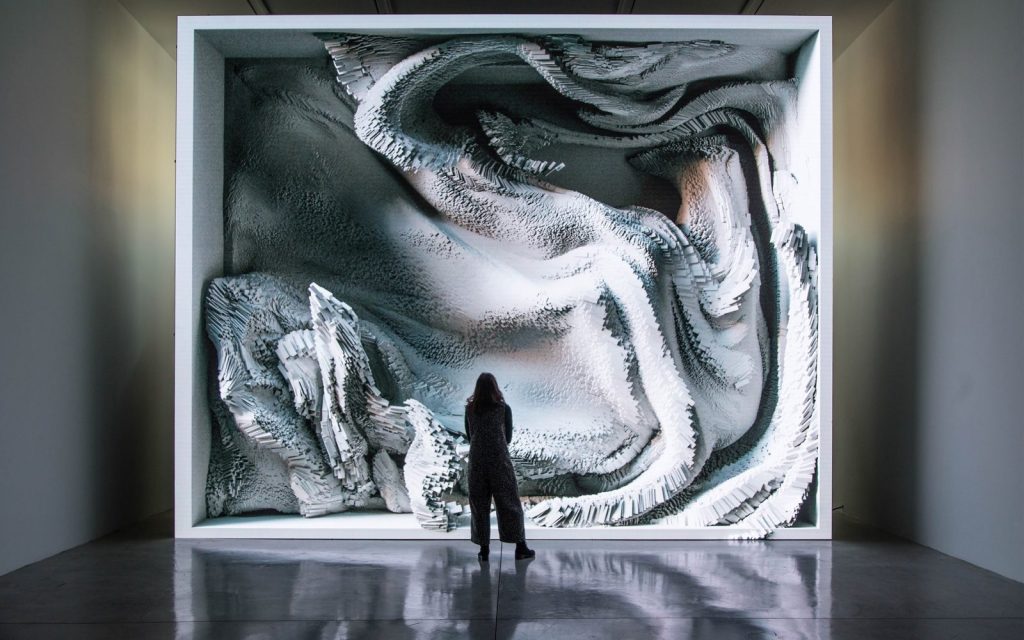
![[OLD FALL 2019] 15-104 • Introduction to Computing for Creative Practice](../../../../wp-content/uploads/2020/08/stop-banner.png)

